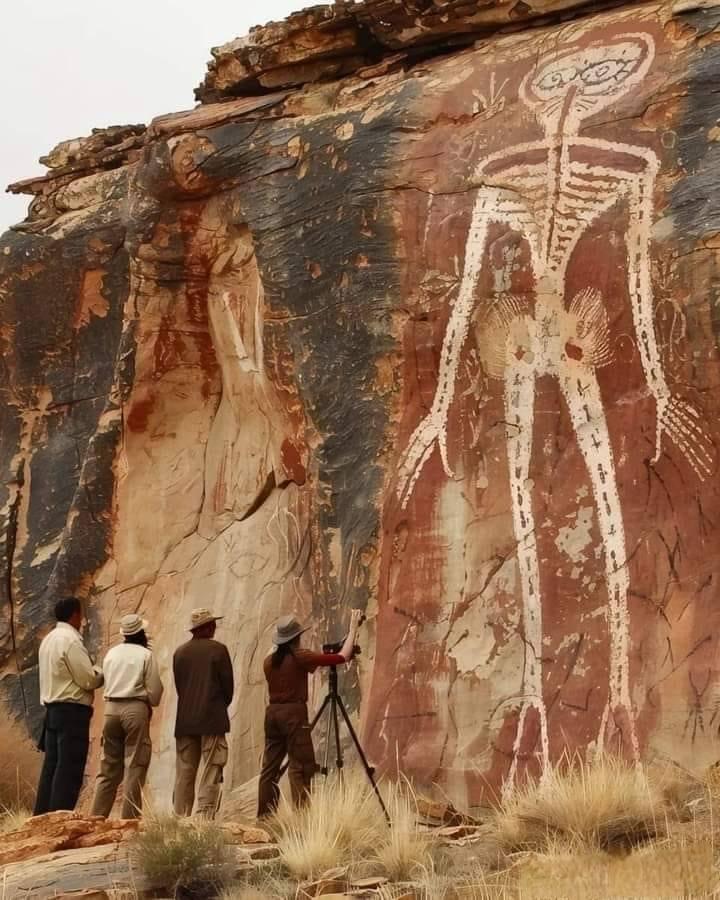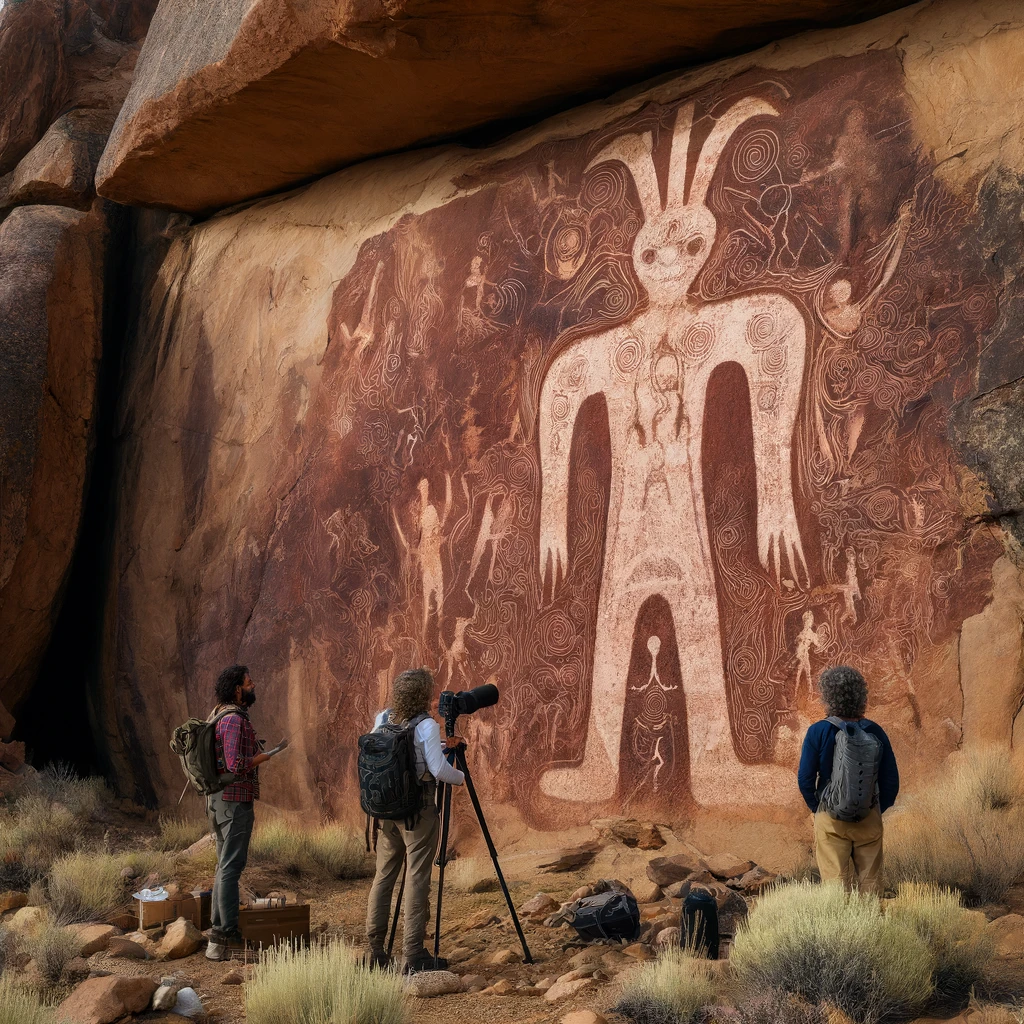India’s Alien Child: Rock Art’s Prehistoric Hint
Rock Art and Spiritual Symbolism
Rock carvings, known as petroglyphs, can be found in various parts of the world, including India, and are regarded as invaluable records of ancient knowledge. These artworks date back thousands of years and capture the lives, beliefs, and rituals of early communities. However, some carvings in India stand out with their unusual shapes and mysterious forms, differing from typical depictions of animals, humans, or ceremonial scenes.
Many archaeologists believe these images represent deities, ancestors, or important spiritual entities in ancient cultures. Exaggerated or stylized body parts—such as large heads, big eyes, and elongated bodies—might have been ways to convey power or sacred significance. Yet, these distinctive features have also led some to draw comparisons with the image of extraterrestrials.
Extraterrestrial Theories and Controversies

The idea of the “alien child” is not new, yet it continues to fascinate the public. Advocates of the “ancient astronaut” theory suggest that these peculiar figures on the rock walls are not just religious symbols but evidence of encounters with beings from other worlds in prehistoric times. According to this theory, ancient people may have interacted with extraterrestrials and documented these encounters through their rock carvings.
These carvings, with large eyes and strange shapes, bear an uncanny resemblance to modern-day depictions of aliens, sparking imaginations worldwide. Could these carvings be distant memories of unique encounters, or are they simply coincidental representations in ancient art?
Scientific Skepticism and Caution

While alien theories are intriguing, many scientists remain cautious and believe these rock carvings are more reflective of the spiritual and cultural lives of ancient people than of extraterrestrial beings. They argue that seeing “aliens” in these images might be influenced by modern-day media, especially science fiction movies and stories.
Anthropologists and archaeologists explain that many ancient cultures used exaggeration and stylization to depict deities or spiritual beings, which may have led to misunderstandings when interpreted from a modern perspective.
An Unsolved Mystery
Though scientific explanations may be plausible, these carvings remain a mesmerizing mystery and continue to pique human curiosity. Perhaps, the answer to these questions lies not in confirming or denying the existence of aliens but in delving deeper into the culture and spirituality of ancient communities.
Whatever story these carvings may tell, they stand as a testament to the imagination and creativity of early humans. And while the “alien child” theories provide an exciting way to approach the past, it’s essential to continue exploring and honoring this heritage for its true value.

Conclusion
In the end, the ancient rock carvings in India remain a part of humanity’s cultural legacy, a puzzle piece in the larger picture of our ancestors’ lives. They remind us that history holds mysteries yet unsolved, and every theory—whether scientific or mystical—enriches our understanding of the past.
So, are these figures truly marks of an “alien child” or simply products of ancient beliefs and imagination? Perhaps, this question will remain open, leaving each person room for personal interpretation and exploration.






